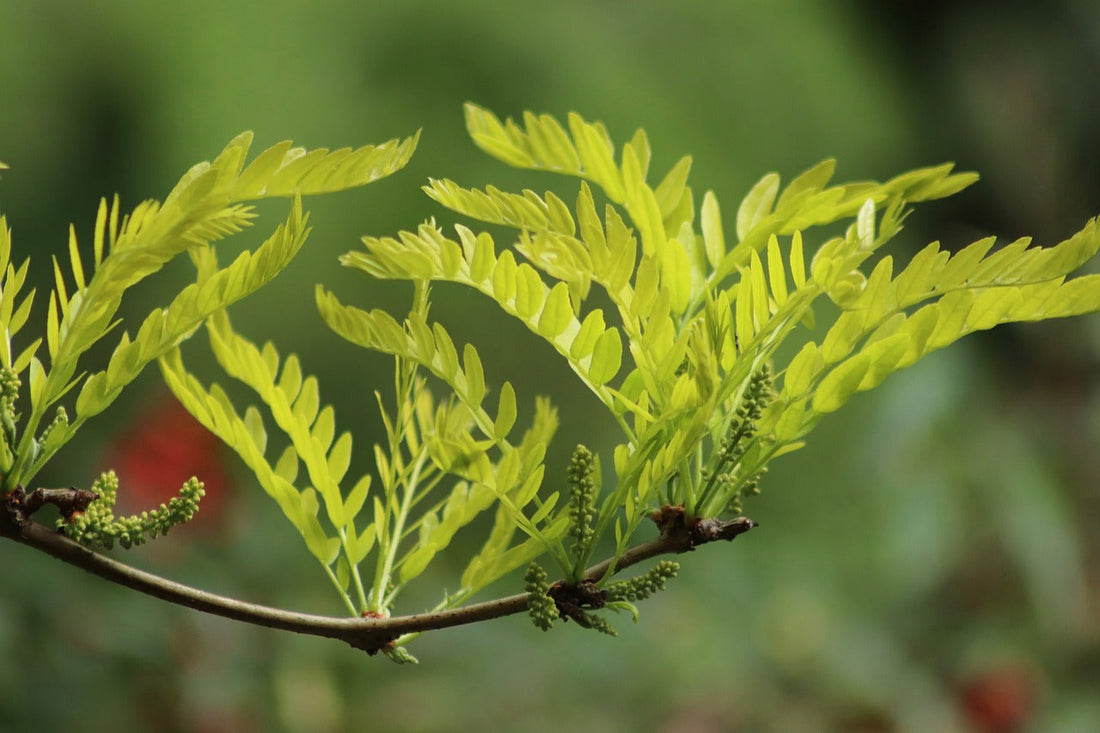Gleditsia triacanthos
This North American native is perfect for both large and small gardens, and is even ideal for providing light shade on patios. However, if you have children or grandchildren frequently running around the garden, you should opt for thornless varieties.

Growth form:
The crown sits loosely, irregularly, and slightly translucently on the trunk, making underplanting with stunning perennials a must. The gray-brown bark and branches are covered in approximately 10 centimeters of simple and branched thorns, which, together with the fruit, create a curious impression, especially in winter, after the leaves have fallen.
Leaf and flower:
The delicate foliage of the honey locust, which is singly to doubly pinnate, glows a fresh green. The shrub also appears very decorative in autumn, turning a golden yellow, which quickly develops. After the flowering period, in June to July, the fruits develop from the flowers. The initially bland, light green flowers, which grow in clusters, ripen into a dark brown, long-lasting pod. This leather-like pod also gave the plant the name (three-thorn) leather pod tree.
Site requirements/care measures:
This resilient and adaptable tree is sufficiently frost-hardy and heat-tolerant. It prefers fresh to moist, nutrient-poor, permeable soils with plenty of sun. Thanks to its inherent elegance, it grows into a beautiful shape, even without pruning, which can become umbrella-shaped, especially in old age.
Ecology/Special features:
The flowers are aromatic and honey-smelling, which makes the shrub a magnet for insects and therefore very valuable to us.
Varieties:
'Ruby Lace': brownish-red when first sprouting, later strong green
'Shademaster': Leaves persist for a long time in autumn, generally deep green, without thorns
'Skyline': leaves dark green, golden yellow in autumn, without thorns
'Sunburst': initially bright yellow, later turning green
TEXT: Nora Kriegs












